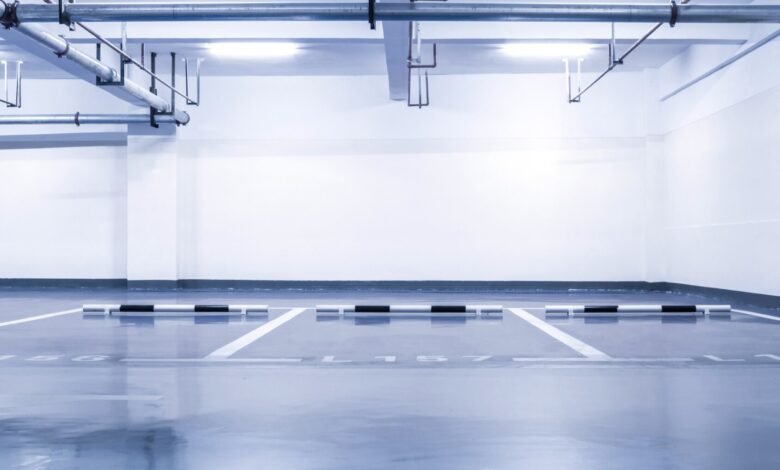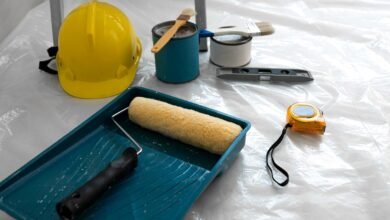What Are the Best Types of Garage Floor Paint?

Introduction
Garage floor paint is one of the simplest and most cost-effective ways to breathe new life into a space that is often overlooked. More than just a cosmetic upgrade, the right garage floor paint can protect the surface from wear and tear, chemicals, oil stains, and moisture. Whether you’re transforming your garage into a showroom for your car, a workshop, or simply want a cleaner and more polished look, painting the floor can make a huge difference. But with so many options and steps involved, it’s important to understand what works best, how to prepare the surface, and what kind of results you can realistically expect.
1. Choosing the Right Type of Garage Floor Paint
There are a few different types of garage floor paint, and selecting the right one depends on your budget, expectations, and how much traffic your garage gets. The two most common types are latex acrylic paint and epoxy-based coatings. Acrylic floor paint is usually easier to apply and more affordable, making it a good choice for light-use garages. However, it doesn’t last as long and may not handle heavy vehicle traffic or chemical spills well. Epoxy coatings, on the other hand, are more durable and resistant to stains, abrasions, and moisture. They bond directly to the concrete surface, creating a hard, glossy finish that can last for years. While epoxy requires more careful surface prep and sometimes comes as a two-part mix, the results are generally worth the extra effort.
2. Preparing the Garage Floor for Painting
Proper preparation is the key to a long-lasting paint job. This step is often underestimated, but skipping or rushing through it can lead to peeling, chipping, or bubbling later on. Start by clearing the garage completely and cleaning the floor thoroughly. Remove oil stains with a degreaser, scrub off dirt, and use a power washer if possible to get rid of any stubborn grime. After cleaning, it’s important to check for any cracks or damage in the concrete. These should be repaired using a concrete patching compound. Once the surface is dry and repaired, it should be etched or lightly sanded to help the paint bond better. Concrete etching solutions are available at most hardware stores and usually involve applying a mild acid to roughen the surface. Don’t forget to let everything dry completely—this may take up to 24 hours depending on the climate.
3. Applying the Paint Correctly
When it comes time to apply the paint, following the manufacturer’s instructions is crucial. Most paints require at least two coats for a durable finish. Start with a primer coat if you’re using epoxy or a product that recommends one. Use a roller for larger areas and a brush to get into corners or edges. It’s best to start at the farthest point from the exit and work your way out to avoid stepping on the wet paint. Allow adequate drying time between coats—usually 12 to 24 hours, depending on temperature and humidity. Keep the garage well-ventilated throughout the process. For epoxy systems, make sure to mix the two components properly and apply the paint within the recommended time frame before it starts to cure. A topcoat or sealant can be added for extra durability and a more polished appearance.
4. Benefits of Painting Your Garage Floor
Painting your garage floor paint offers more than just visual improvement. A painted floor resists stains, is easier to clean, and reduces the amount of dust that unsealed concrete naturally emits. If you work on cars or projects in your garage, a painted surface also helps protect against oil, brake fluid, and other chemical spills that could damage bare concrete. Painted floors can also improve lighting by reflecting more light, making your garage feel brighter and more inviting. In addition, a freshly painted floor can increase the resale value of your home, giving potential buyers the impression that the entire property is well maintained.
5. Maintenance and Longevity
Maintaining a painted garage floor is relatively easy, but there are a few things to keep in mind to ensure it stays in good shape. Sweep regularly to avoid abrasive dirt and grit from scratching the surface. Clean up spills as soon as possible to prevent staining, especially if you’re using latex paint, which is less resistant than epoxy. Avoid dragging heavy equipment across the floor without protection, as this can damage the paint. For high-traffic garages, you may need to reapply the topcoat every few years. If you’ve used a high-quality epoxy coating and prepared the surface well, you can expect the floor to last 5 to 10 years or even longer with minimal upkeep.


